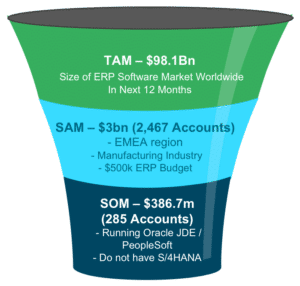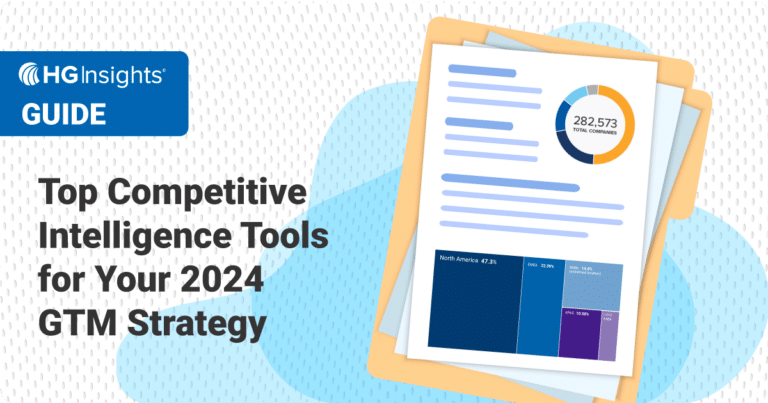When it comes to sales planning, leaders traditionally go with their gut instead of using data to make efficient, equitable decisions. These sales planning decisions are usually based on previous years’ results. They look backward.
Without planning that looks forward—using data-driven insights into accounts with the highest propensity to buy—you’re wasting time and money on the wrong accounts. You have to know your destination before starting off on any journey. Success depends on data-driven insights, in planning, decision-making, and execution.
How Sales Planning Helps Everyone
Planning brings precision to sales motions, so you know which accounts to prioritize, how to move prospects down your sales funnel, and how to track the progress of your sales’ team’s efficiency.

Sales Planning with data and insights lets you design a Go-To-Market strategy to optimize direct sales coverage, capacity, and sales assignment models. Planning also gives your sales teams a broader view of the market. A good sales plan answers some of your business’ most important questions:
- Who should we sell to?
- How should we reach them?
- When should we engage them?
- What solution/service is a good fit?
- Why is a prospect a good fit for your solution/service?
- Where are the geographies that need your solution/service?
Beyond these questions, planning powers the processes behind your selling motions, so you can:
Forecast the Future
Explore possible business outcomes and make accurate predictions
Gives you reliable data-driven decisions for your business
Be Agile and Adaptable
Set process plans to ensure consistency, repeatability, and predictability
Improve Efficiency
Optimize resource allocation
Solidify competitive position
Drive Alignment
Operate from a single source of truth
Continuity in messaging between departments, throughout the buying journey
Hit Growth Goals
Scale with velocity, predictably, following your sales plan
These are questions you just can’t answer based on gut feeling.
Why Sales Planning Is For Everyone
Sales planning is not just for sales teams. It benefits all personas, regardless of what team you’re on, or department and industry you’re in. We’ve already seen some of the common reasons why you need sales planning and the benefits that come from it. Now, let’s explore the power of sales planning by persona:
- Executives and strategy teams can achieve predictable results on the way to hitting growth goals
- Product teams can iron out the dynamics of product strategy
- Sales teams can build balanced teams, equitable sales territories, and hit quotas to ensure success
- Marketing teams can deliver consistent messaging across all reps and territories to build inbound leads and ensure a smooth journey down the sales pipeline
When done correctly, and backed by data-driven insights, everyone benefits from sales planning. According to Forrester, one of the most important trends in planning motions is the need for cross-departmental alignment. And this comes from good planning—for example, synchronizing messaging in sales and marketing campaigns, and continuing with the same messaging to prospects along the entire buying journey. But the odds are, your teams aren’t as closely aligned as they should be. If you’re unsure, check out our sales and marketing efficiency calculator. Team alignment is one of many important goals to guide your sales planning.
Goal Setting For Sales Planning
There are countless tips, tricks, and templates to create a sales plan, but most of them don’t even touch on the most important aspect, the one thing that informs everything – data-driven insights!
Falling short of the mark, these generic guides won’t get you far. At most, they help you make a plan to make a sales plan! But they have on thing in common: they have to be SMART. That means they need cross-team alignment. Here’s the best part—creating an effective sales plan requires cross-departmental alignment, so you’re already one step closer. If your goal is to increase revenue, here are some example questions you need to answer, across several teams, to create a SMART sales plan:
Specific
Who are your target customers for your product/service?
What are the price points for your product/solution?
Measurable
How are you tracking the effectiveness of your sales plan?
By calls made, demos booked, or price per conversion?
Attainable
What specific actions will get you to this goal?
Where do you fit into the competitive landscape of your industry?
Do you have built in cross-selling and upselling opportunities for your sales teams? Are there any promotions you can pitch?
Are you using the messaging created by marketing to capitalize on these opportunities?
Relevant
Have you delegated responsibilities to your team equitably and effectively?
How much revenue does your team aim to bring in?
What tools/resources will your team use to hit your goal?
Do you have enough sales reps to reasonably hit this goal?
How does your sales plan service your overall growth goals?
Time-bound
Do you have an outline of important dates and deliverables with who is responsible?
What is the timeframe for hitting your growth goals?
What are your delivery dates and are they flexible?
By neglecting sales planning, you’re withholding the tools your team needs to hit growth goals. You risk unpredictable sales forecasting, workforce plans that don’t fit growth goals or the future needs of your business, failure to hit unrealistic quotas, and compensation plans that don’t drive performance—resulting in employee burnout, churn, and stagnation. This hurts everyone—from the C-suite to sales to CS.
Now that we all have data at our fingertips, you cannot rely on gut feeling. If you do, you’re at a competitive disadvantage, and the competition will outsell, outgrow, and outperform you.





